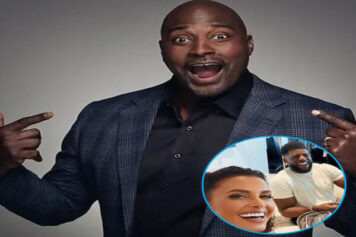When the Winter Olympics women’s halfpipe competition goes down on Feb. 12th, most athletes will be looking to rise above the fray and capture the moment, a glistening gold medal and the life-long adulation of legions of sports fans.
Angeli VanLaanen is ahead of the curve. She’s already won her symbolic medal when she returned to freeskiing in 2012 after a three-year hiatus from competition to combat advanced untreated Lyme disease. Now in remission, VanLaanen has regained her status as an undeniable force and is free from the medical hindrances that poisoned her superior skill with momentary lapses of unexplained mediocrity and amateurish bewilderment.
Win or lose, she is already considered one of the most popular, talented and courageous athletes at Sochi, Russia’s Winter Olympics. Her documentary LymeLight: The Story of Professional Freeskier Angeli VanLaanen Living With Lyme Disease, chronicles her sickness, rehabilitation and re-introduction to the world of competitive athletics. It has spread hope to thousands of people afflicted with a potentially debilitating and crippling illness whose detection still eludes the world’s greatest scientific minds.
According to The Center for Disease Control and Prevention (CDC) , in 2012, there were over 30,000 reported cases of Lyme disease in the U.S. and there are reportedly millions of people with the disease throughout the world. Lyme disease is caused by the bacterium Borrelia burgdorferi and is transmitted to humans through the bite of infected blacklegged ticks. Lyme disease accounts for more than 95 percent of the vector borne cases of illness in the country, surpassing AIDS as one of the fastest growing infectious epidemics in our nation.
Typical symptoms include fever, headache, fatigue, and a unique skin rash called erythema migrans. If left untreated, infection can ravage the joints, the heart, and the nervous system. Researchers also note that Lyme disease remains underreported with an estimated seven to 12 cases for each reported case. Lyme disease can occur at any age, with the highest incidence of infection occurring in patients aged 2-15 years old with increased levels of outdoor activity and environmental exposure.
That makes sense, Van Laanen told The Shadow League in late December. “I believe I was bitten by a tick on a family outing at age 10 and that’s when I acquired Lyme disease.”
The VanLaanens are Bellingham, Washington natives, but spent one year in Green Bay, Wisconsin when Angeli was 10. The highest incidences of Lyme disease in the U.S. occur in the North-central states, especially Wisconsin and Minnesota. During that hot summer, they visited a local carnival. “I remember going on rides and walking around with my family and then just fainting,” Van Laanen said. “That was the first time I probably showed symptoms. I would get bugs on me when I was young and just knock the ticks off. I didn’t know it could be life threatening. I was a kid just having fun.”
Angeli's mother took her to a doctor, who attributed her fainting to the heat. She had a few more fainting spells before they moved back to Washington, but, the problem was never diagnosed. Over the next 14 years Angeli visited more than 20 doctors and heard misdiagnoses ranging from a hormonal imbalance to mononucleosis to a brain tumor. During her junior year in high school one doctor told her “it was all in her head.”
Most cases of Lyme disease can be treated successfully with a few weeks of antibiotics. But with every misdiagnosis – as is common with Lyme disease – Angeli’s mental and physical state slowly deteriorated. She experienced panic attacks and was constantly frustrated by her condition which was highlighted by chronic bouts of fatigue.
Van Laanen’s Lyme disease went untreated for most of her life, so her situation was a worst case scenario. It would take more than a few weeks and some antibiotics to get her weakened, broken body back into world class shape. It took a couple of years for Angeli to gather enough strength to simply want to get out of bed.
“Before I was diagnosed it was terrible just not knowing what was wrong,” she said. “At times I started to doubt myself but I always pushed through, but I never felt right.”
And that’s just not Angeli. From birth she was a go-getter. In the documentary, Angeli’s mother Allain VanLaanen said, “Angeli was born fiercely independent…very ' by myself.' She was motivated to get stuff done…she was very inspired…she was wise beyond her years with hair that bounced off her head in big curls that defied gravity.”
She attended schools where the arts, athletics and personal exploration were encouraged and that thirst for freedom of expression has remained with her Angeli throughout life.
Allain says Bellingham, Washington was a kid’s paradise. There was always an abundance of recreational activities for kids and at a very young age they started going up to the mountains (Mount Baker) every weekend to ski. It was a place she says, “where the kids experienced a lot of independence.”
That’s when Angeli and her older brother and their friends started taking skiing to another level and Allain felt it was time to get them lessons and let them connect with other kids who were about that life; moving at ridiculous speeds and jumping off of stuff. When they drove up to Whistler, B.C., in high school to improve their freestyle skills at the Momentum summer camp, Angeli went, too.
“My brother was always a big influence on me,” VanLaanen insisted. “He was very athletic and into the outdoors and that rubbed off on me. Now he works a regular job. I kept skiing.”
More than anyone, Angeli really embraced the sport. “Skiing was living in the moment and being totally ware of everything around me,” said VanLaanen. “And just enjoying it to the fullest. It made me comfortable and confident and easy to just share who I am.”
“Angeli was always very talented she definitely kind of had the knack at some point,” her brother Cachaulo recalls in the documentary. “She not only had the form down but she started picking up the same tricks. That's when I knew this is what she was meant to do. “
Van Laanen learned her first halfpipe trick, a 360, from Momentum coach Sarah Burke. Burke became one of Angeli’s mentors and went on to win four X Games gold medals before dying in January 2012 from injuries sustained in a training crash. Soon Angeli was ready to test her aerial breakdancing maneuvers against others and at 19 she entered and won her first professional halfpipe competition, the 2005 Vermont Open. In 2007, she finished eighth in her first X Games.
She was the perfect skiing enigma; daring, magnificently skilled, wildly ambitious, but inexperienced and inconsistent.
Professional Freeskier Anna Segal recalls the stir that Angeli caused when she stormed on the freeskiing scene: “I knew her by reputation. I heard that this little girl from Bellingham…was absolutely killing it in the halfpipe.”
From day one, Angeli intimidated her opponents with her effortless grace, power and athleticism. Despite living with the effects of the unknown disease and the myriad symptoms that come with it (chronic sinus infection, fainting spells, dyslexia, vertigo and fatigue) Van Laanen swiftly became one of the world’s elite female skiers and a multi-faceted expert in her sport. She’s been featured on the cover of Skiing Magazine and in super-official skiing publications such as Powder Magazine and Freeskier Magazine. She’s also put her lethal halfpipe steez down at the Dew Tour.
Eventually, even a spirit as huge as Angeli’s couldn’t stop the inevitable effects of the Lyme disease that had gone undiagnosed for over a decade. “Out of nowhere I would have no muscle control in my legs or no balance in the middle of the air doing the pipe; I’d lose sense of direction,” she recalls. “I never really knew what it was. I knew it wasn’t OK. It was something I struggled with because doctor after doctor couldn’t tell me why I was having these problems. So the way I dealt with it was to push it aside and work through it. I loves skiing that much.”
It showed in her performances. One minute she’d be Debbie Allen on skis and the next she’d be crashing and the frustration was obvious. Most skiers on the circuit just thought she was crazy and couldn’t handle competition, but family members who understood the magnitude of her focus and abilities knew something was wrong.
VanLaanen entered her second X Games in 2008 as a favorite. During a dramatic crash in the finals, she aired out of the pipe for a 720 and suddenly plummeted from the sky like a wack CD getting dropped from the top of a Manhattan A&R’s office. Vertigo, which came and went because of the Lyme disease, arrived at the most inopportune time and wrecked her medal hopes, as she stumbled to an 11th-place finish.
"I completely lost all sense of what was up, what was down, where I was in the air," VanLaanen says in a February espn.com article. "I felt as though I was just falling out of the sky. I didn't know how I was going to land; I couldn't tell where the snow was. That sense of not having control was terrifying."
Angeli was incredibly still competing at an elite level and even participated in a movie called 44 Days with the dopest freeskiers on the planet, when she returned to the X Games in 2009. She had her best finish ever at the completion, placing sixth in the Women’s Skiing SuperPipe (A “healthier” Van Laanen couldn't even beat that solid performance, notching a 7th-place finish at the 2014 X Games in Aspen).
Despite the success, Allain says Angeli’s condition had deteriorated considerably. She was sleeping for multiple days at a time and experiencing crippling body pain.
“Finally, “Angeli told TSL, “It wasn’t until my aunt saw a documentary on Lyme disease called “Under our Skin,” and she suggested I go to a doctor and get tested for Lyme disease."
After her diagnosis in November, VanLaanen was forced to put competitive halfpipe on hold in the prime of her career. "It's the lowest I've ever felt, she said. "The doctors couldn’t guarantee me that the treatment would even work. My condition had really worsened and I had very little hope.”
Angeli began antibiotic treatment immediately. “I spent about eight hours a day hooked up to an IV, she added. “It was hard to deal with.”
VanLaanen didn't ski for two years, stopped drinking alcohol and caffeine and chilled on the sugar. She couldn't exercise or sweat because of risk of infection. Angeli says the rehabilitation process was painful, frustrating and demoralizing at times. “I was just always so tired,” she told TSL. “My friends and family would call and try to lift my spirits but I literally couldn’t get out of the bed.”
With no physical strength available to continue her Olympic mission, Angeli turned her efforts towards inspiring others in a different way. She hooked up with Director John Roderick of Neu Productions in November ‘11 to make an awareness documentary sharing the uncut, journey of her battle and experiences with Lyme disease.
“You’re going through all of these emotions and you’re not feeling like yourself,” VanLaanen sullenly reflected. “But knowing that it’s possible to get better once I started getting rid of symptoms… I wanted to make a difference for other people that were in the position I was in…at that point I was just hoping to help other people be aware of the potential dangers and the risks in contracting the disease. I realize that there’s a reason for everything and obviously I have a bigger purpose than just skiing. So many people have contacted me and thanked me after doing the film and said they were inspired to get healthy and fight on and even get diagnosed after the film. So it definitely serves a bigger purpose than any Olympic goal that I have.”
Eventually VanLaanen got a clean bill of health and she resumed her Olympic journey, returned to competition and placed 6th at the FIS World Championships in 2012. “In the beginning it was hard to catch up on three years of time, refine my old tricks and learn new ones, said Angeli, “but it was the most fun I had in years and the skill and passion for halfpipe was still there.”
By the time VanLaanen finished her first run at the U.S. Grand Prix in Park City, Utah on Jan. 18 she was back to beasting the competition. The 28-year-old qualified for the Sochi Olympics with a first-place score of 88.2. Most Hollywood producers would turn their sets off right there and call the writers up, but VanLaanen isn’t done with deft-defying feats.
“I’m just so grateful to have my health back and to be back doing what I love,” she gushed. “There was obviously something wrong with me for a long time but I just fought through it. I thought it was just something I had to deal with.
No more spots or blurred vision. No more space cadet moments in the middle of an “epically big” maneuver. No more eating it for no reason. No more misinformed character assassinations from her peers and misrepresentations of her mental toughness. VanLaanen is a legit favorite to win the gold at Sochi and with a dual platform of Lyme disease survivor and world class athlete, the Olympics is the beginning of a new journey.
Angeli’s triumphs and tragedies have elevated her from badass freeskier to iconic vehicle of a world-wide Lyme disease education and prevention movement. VanLaanen’s infectious smile, sharp, modelesque facial features, guts and perseverance will surely garner her some advertising chips. However, her first priority following the Olympics is to embark on a LymeLight tour in schools around the country as a part of an awareness program she has created.
Far greater than being an Olympic hero, VanLaanen is an Olympian for life. What’s better than that?



